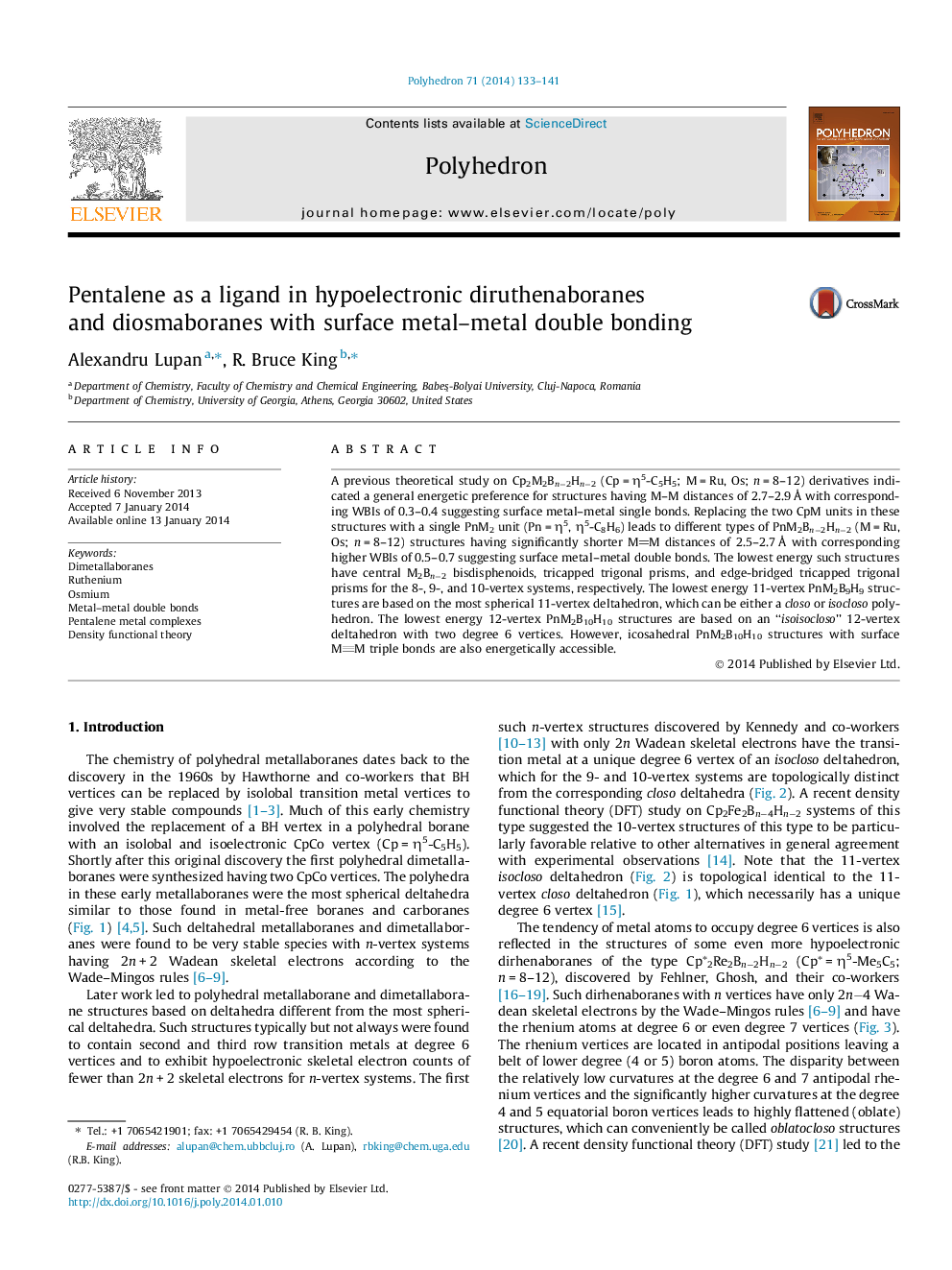| کد مقاله | کد نشریه | سال انتشار | مقاله انگلیسی | نسخه تمام متن |
|---|---|---|---|---|
| 1336709 | 1500268 | 2014 | 9 صفحه PDF | دانلود رایگان |
A previous theoretical study on Cp2M2Bn−2Hn−2 (Cp = η5-C5H5; M = Ru, Os; n = 8–12) derivatives indicated a general energetic preference for structures having M–M distances of 2.7–2.9 Å with corresponding WBIs of 0.3–0.4 suggesting surface metal–metal single bonds. Replacing the two CpM units in these structures with a single PnM2 unit (Pn = η5, η5-C8H6) leads to different types of PnM2Bn−2Hn−2 (M = Ru, Os; n = 8–12) structures having significantly shorter MM distances of 2.5–2.7 Å with corresponding higher WBIs of 0.5–0.7 suggesting surface metal–metal double bonds. The lowest energy such structures have central M2Bn−2 bisdisphenoids, tricapped trigonal prisms, and edge-bridged tricapped trigonal prisms for the 8-, 9-, and 10-vertex systems, respectively. The lowest energy 11-vertex PnM2B9H9 structures are based on the most spherical 11-vertex deltahedron, which can be either a closo or isocloso polyhedron. The lowest energy 12-vertex PnM2B10H10 structures are based on an “isoisocloso” 12-vertex deltahedron with two degree 6 vertices. However, icosahedral PnM2B10H10 structures with surface MM triple bonds are also energetically accessible.
The lowest energy PnM2Bn−2Hn−2 (Pn = η5,η5-C8H6; M = Ru, Os; n = 8–12) structures are predicted by density functional theory to have deltahedral structures with MM distances of 2.5–2.7 Å and corresponding WBIs of 0.5–0.7 suggesting surface metal–metal double bonds.Figure optionsDownload as PowerPoint slide
Journal: Polyhedron - Volume 71, 29 March 2014, Pages 133–141
